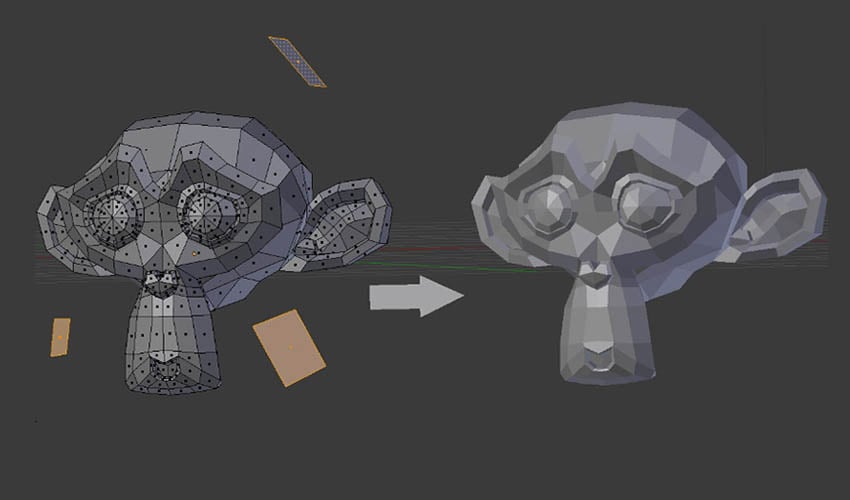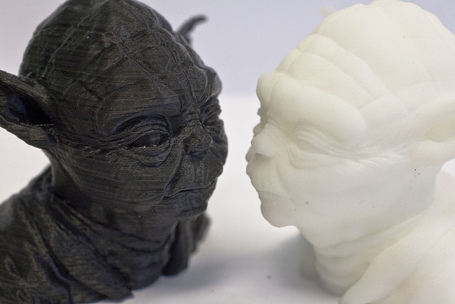

The entire model and its support are now one seamless, manifold mesh that’s almost ready for 3D printing. Hover your pointer over the Remesh modifier and press Control + A to apply it, then do the same with the remaining CorrectiveSmooth modifier.To soften the artifacts caused by the voxel remeshing, add a Smooth Corrective modifier, check Only Smooth, set the Smooth Type to Length Weight and adjust the Repeat value to your liking.Using the default Suzanne dimensions, I set the Voxel Size to 0.007. Add a Remesh modifier, make sure Voxel mode is active and set the Voxel Size to a detail level you like.Select both the head and the support in Object Mode, then press Control + J to join the objects into one mesh.Make sure the support has its subdivision modifier applied by hovering your pointer over the modifier and pressing Control + A to apply it.
#Blender 3d print how to#
How to make a Blender object 'watertight' for 3d printing: This means the object should have a continuous surface without loose parts, open edges, and other anomalies that might exist in virtual 3D space. In order to be ready for 3D-printing, an object needs to be manifold, or ‘watertight’. In this case, the monkey mesh exists of three separate parts, featuring open edges: the head and two eyes. In the case of Suzanne, make sure the support and Suzanne’s chin are overlapping enough to handle the weight of the entire head.Īlthough Blender’s viewport shows us something that seems ready to be 3D-printed, some more work is still necessary. If your mesh has small or thin features, those might break off during the 3D printing process or afterward. The balance. Suzanne’s large head volume needs to be taken into account when creating support.So before you 3d print, consider these two things:

Added two subdivisions with the subdivision modifier, extruded a middle part, and added some edge loops, also inside the caps, to make the features a bit sharper. Enter Edit Mode and manipulate the cylinder vertices as you wish, moving vertices, adding edge loops, and extruding faces. Press Shift + A ➔ Mesh ➔ Cylinder to add a cylinder to the 3D cursor position. Orbit the viewport to view Suzanne’s chin, then Shift + right-click on the bottom of her chin to place Blender’s 3D cursor there. So let’s create support, so the head can keep the same orientation as in the 3D viewport. In the case of Suzanne, you could put her on a table with a tilted head, but it might still roll to the side. But once 3D-printed, an object will fall over if there is insufficient balance. In virtual 3D everything floats by default. Hover your pointer over the Subdivision modifier and press Control + A to apply the subdivisions to the monkey head. This will smooth out Suzanne’s surface, so we’ve got proper polygon detail for 3D printing. While the head is selected, press Control + 3 to add a Subdivision modifier with three subdivision iterations. The default monkey head has a very coarse amount of polygons. Let’s delete all default scene elements, and add a Suzanne (Monkey) head to Blender. This effect can’t be translated to a 3D-printed object, so you’ll need to ensure that an object has sufficient polygon detail to avoid visible facets, unless you’re aiming for a stylized execution. In virtual 3D space, low polygon detail can be obscured using a shader, giving a 3D object’s surface the illusion of smoothness in renderings.


You will also find printable models to experiment with yourself. There are extensive chapters introducing Blender modeling for new users, and then going on to cover everything you need to know to create efficient, high-quality 3D prints – including color, wall thickness, and overhang problems. This training is for everyone who is into 3D printing, beginners and professionals alike. However, with Blender version 2.67 this now is even more accessible and powerful, thanks to the 3D Printing Toolbox and real-time Mesh Analysis features. Blender has supported 3D printing modeling and file formats since 2002.


 0 kommentar(er)
0 kommentar(er)
